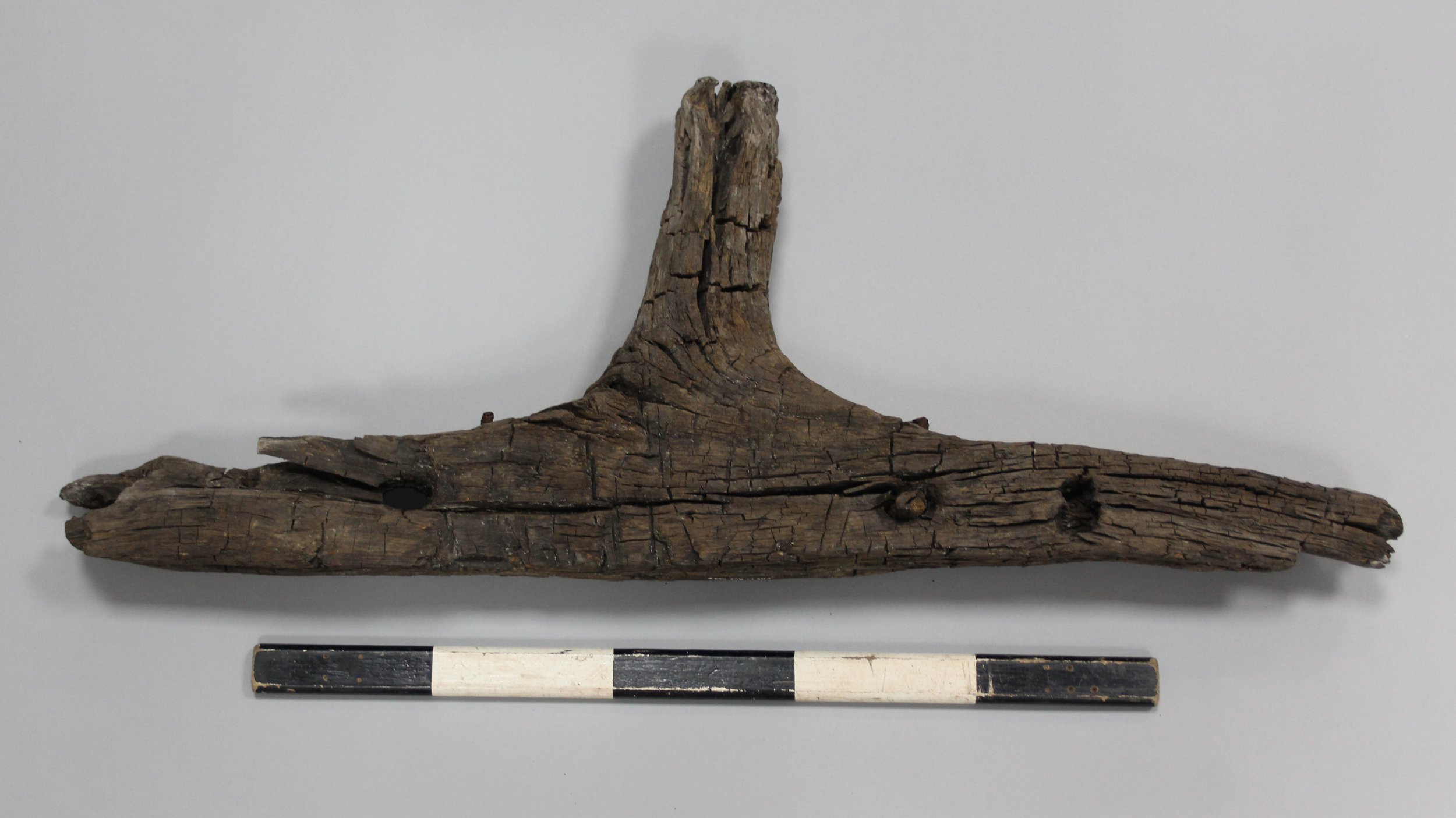An Upright Thole, Already Old-fashioned
This wooden object from excavations at Perth High Street is a medieval thole. It was fixed to the gunwhale (upper edge) of a boat or ship so that an oar could be attached to it via a loop, keeping the oar in place and providing a pivot while rowing. However, upright tholes like this one were rather old-fashioned by the time it was deposited in the 13th century; claw tholes had already become more common.
Despite its unassuming appearance, this object does give some clues as to the type of vessel it was designed for. Iron pin rods to limit the swing of the oar are set at either side of the thole pin, suggesting that the boat was rowed in both directions – a double ended ferry, perhaps. This specialised use would help explain the presence of an artefact type that had already been rendered largely obsolete.
When the thole arrived at AOC’s laboratory, the wood was covered in significant white bloom, probably due to excess PEG (a synthetic resin used to conserve organic materials such as wood and leather). The wood had cracks and fractures throughout, as well as minor flaking, and the metal pins were actively corroding. Our conservators worked to clean away the excess PEG and and biological growth, to stabilise the iron components, and to bond loose fragments to the object. Although the wood remains fragile, the thole is now stable and in good condition.
The iron rods at either side of the thole pin are just visible
Cracks and factures had left the thole in need of stabilisation


